A few months back, I made a post on the tug Luna and Venus, of the Boston Towboat Company, dubbed Historic Tugs I. The intention was to highlight museum vessels and whatnot with historic documentation and photos. To change that a bit, I am going to start a new series covering just tugs of the 1930’s-1970’s, including both new and repowered boats, using several styles of propulsion. This first tug profiled, will be the M. Moran.
Not much has to be said about Moran Towing, one of the oldest and well known tugboat companies in the world, founded in 1860 by Irish immigrant, Michael Moran. Moran Towing is a well established company, using a vast fleet of tugs, ranging from small 80′ direct reversing Canal tugs, to large, WWII surplus ocean going 165′ tugs, many of which were on charter from the US Navy. Fast forward to 1960: These were all single screw tugs, never exceeding much more then about 2000HP. Moran Towing had a long history of working with TAMS Inc., and later the General Motors Marine Design Section under naval architects Richard Cook and later Joe Hack.
In the era, just about every tug was considered “Ocean Going” (a scary thought..), however in reality only the larger, WWII era tugs really were just that, with the rest being glorified harbor and coastal tugs. Joe Hack would design Moran a 120′ tug, with a 31′ beam, and an 18’9″ depth. A new first for Moran was also introduced – twin screw propulsion.
The tug was named the M. Moran, after the founder of Moran Towing’s Michael Moran. She would be the 7th tug named for him. The M. Moran was designed for an 11,000 mile range, or anywhere in the world – holding a capacity of 75,000 gallons of fuel. The M. Moran was built in Texas, by Gulfport Shipbuilding.
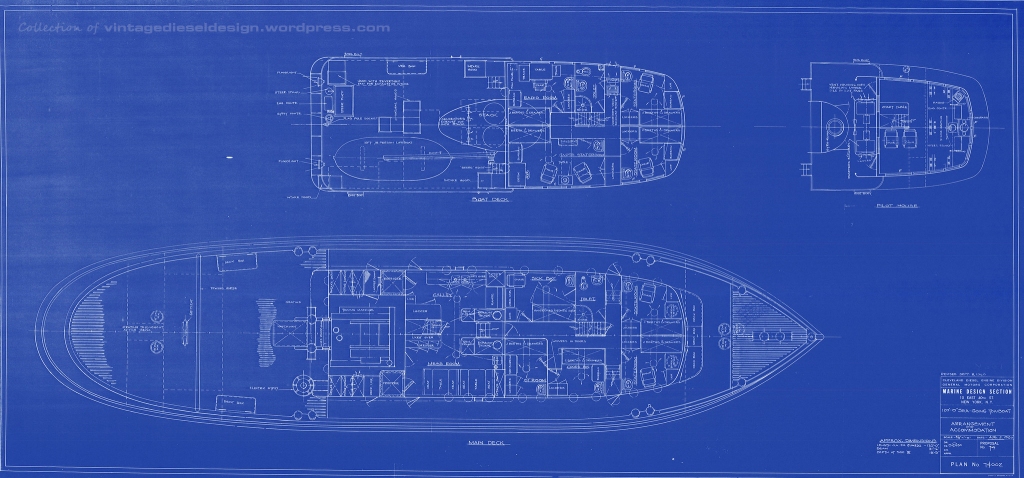
The M. Moran had a rather unorthodox layout, using two split levels underneath the wheelhouse, giving her a rather odd, low profile appearance, but affording a massive amount of interior space. 9 full staterooms, two of which were dubbed a radio room, and a sick bay. A large central galley was located over the engine room – thus she lacked any actual upper engine room, also known as a fiddley. Behind the galley was a space for a 75HP Almon-Johnson towing machine.

You guessed it – the M. Moran was Diesel-Electric, powered by a pair of Cleveland Diesel, 1750HP 16-278A engines, with Allis-Chalmers main generators – all WWII surplus equipment, giving her a rating of 3,500HP. The engines were factory rebuilt, and were originally installed in US Navy Landing Ship LSM-529 (engine #55810), and LSM-324 (engine #55284). Ironically the other engine from LSM-324 would also go to Moran, re-powering the steam tug Michael Moran. The tug had a pair of Detroit Diesel 6-71’s for generators, as well as a piggyback shaft generator belt driven on top of each main generator. The tug had a pair of 9′ 10″ wheels, and a rated bollard pull of 95,000lbs.
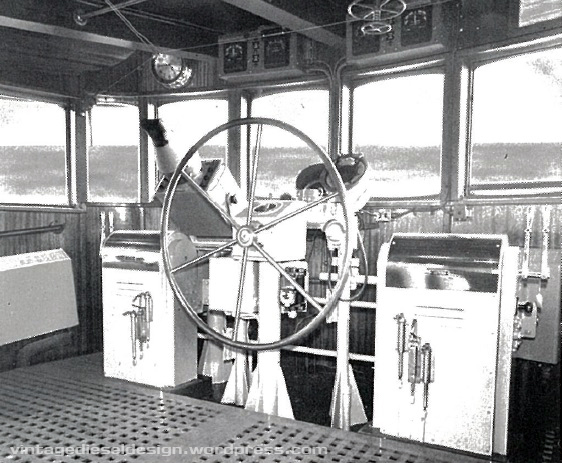
The wheelhouse of the M. Moran featured American Engineering electric-hydraulic steering system, and the same Lakeshore throttle stands used by Cleveland for a number of years, of course modified for twin screw. A Sperry gyro, and radar rounded out the interior – pretty spartan, even for its time. While the maneuverability of Diesel-Electric is well known, an interesting feature of the M. Moran – being twin screw, was the cross-compatibility. The tug could run on only one engine, and power both propulsion motors when running around lite tug, somewhat of a throwback to the Destroyer-Escorts of WWII (where the propulsion motors in the tug originated), where various combinations of engines could power certain groups of motors.

The M. Moran was placed in service on 9/27/1961, and her very first trip, just a week later – would take her all the way to Pusan, South Korea, towing the 30,000kW generating barge Resistance, a WWII LST converted into a powerplant. The M. Moran was well covered in Cleveland Diesel’s Diesel Times newsletter Diesel Times, as well as several issues of Moran Towing’s own newsletter, Tow Line.

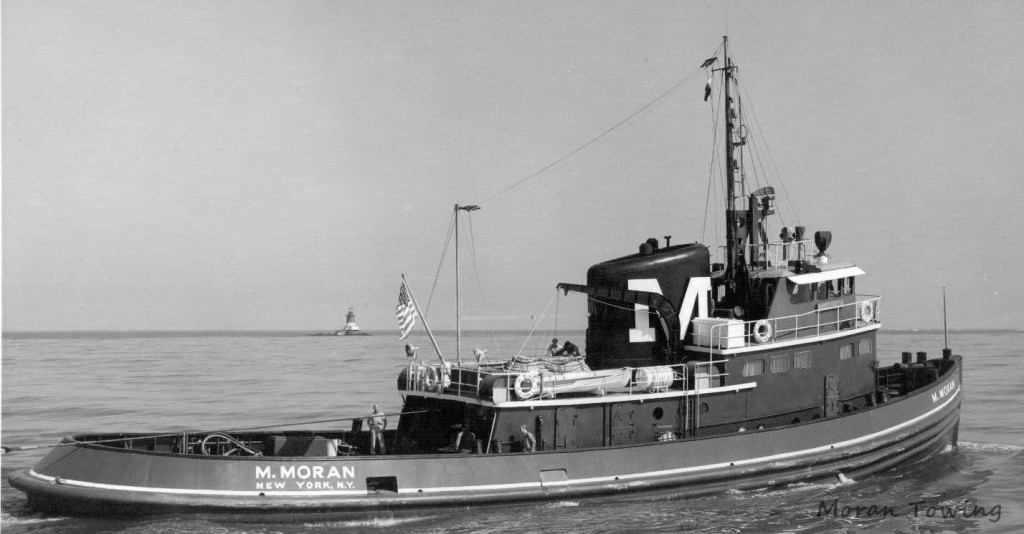
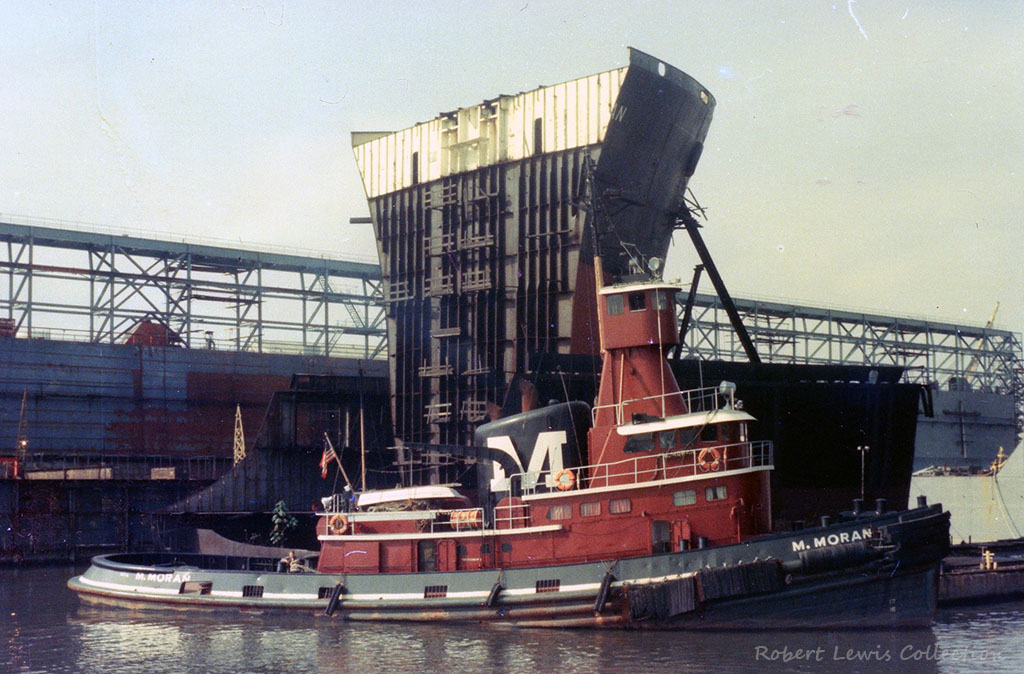
By the late 1960’s the M. Moran would gain a large upper wheelhouse. She would spend many years running around the Gulf area towing large project cargo, as well as the occasional foreign tow. The M. Moran was briefly renamed as the Port Arthur for a brief time in the early 1970’s, likely operating under a charter.

Moran would go on to order a 2nd tug, to the same design as the M. Moran, named the Esther Moran. The Esther would be built in New York, by Jakobson Shipbuilding. At the same time, Jakobson also built the Patricia and Kerry Moran, which used the same hull design, however it was shortened 12′ with the tug being setup for harbor work, thus lacking the towing machine and split levels. These three tugs would be the last new tugs powered by Cleveland 278A engines. Cleveland was rolled into Electro-Motive in late 1961.

Both the M. Moran and the Esther were not Cleveland powered very long. Both tugs would be repowered with EMD 16-645E engines with air clutches by the end of the 1960’s, giving them a new rating of 6,300HP – a massive amount of power at the time. Joe Hack would revisit the split level design with a pair of tugs for Gulfcoast Transit, the Katherine Clewis and Sarah Hays.

In 2000, Moran sold both the M. Moran and Esther Moran to Canada’s McKeil Marine. The M. Moran became the Salvager, and the Esther as the Salvor. The Salvager became the Wilfred Seymour in 2004, later being shortened to Wilf Seymour. Both tugs operate in the Great Lakes, and both would be converted into Articulated Tug-Barge combinations, with the Wilf getting a Bludworth coupler, and the Salvor a JAK system. The Salvor was laid up in 2018, and the Wilf is still in service. 10/2021 update: McKeil has scrapped the Salvor in Hamilton, Ontario.
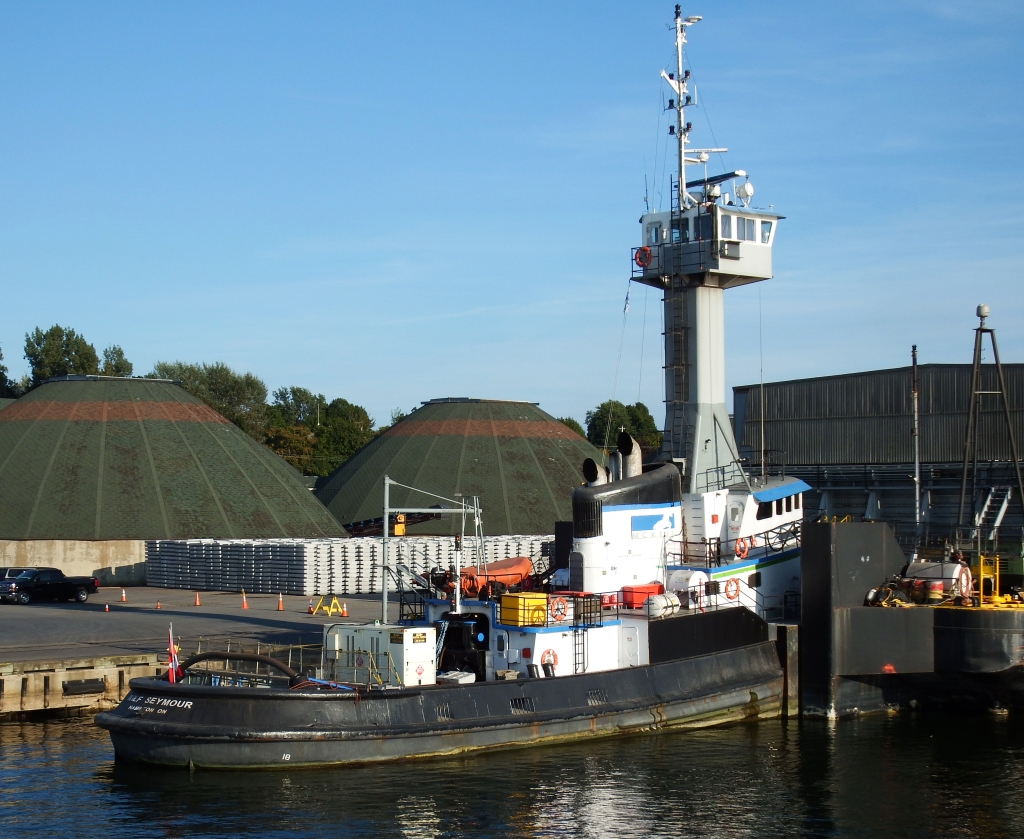

Noted maritime artist Carl G. Evers would do several paintings of the M. Moran, including one of her in Korea. Several of Carl’s paintings have graced the cover of Moran’s Tow Line.
More on the M. Moran and Esther Moran:
https://tugboatinformation.com/tug.cfm?id=772
https://tugboatinformation.com/tug.cfm?id=746
https://gltugs.wordpress.com/wilf-seymour/
https://gltugs.wordpress.com/salvor/
Note – Yes, I know the caption text is not centered under each photo. It is a glitch in WordPress that I have yet to figure out..

